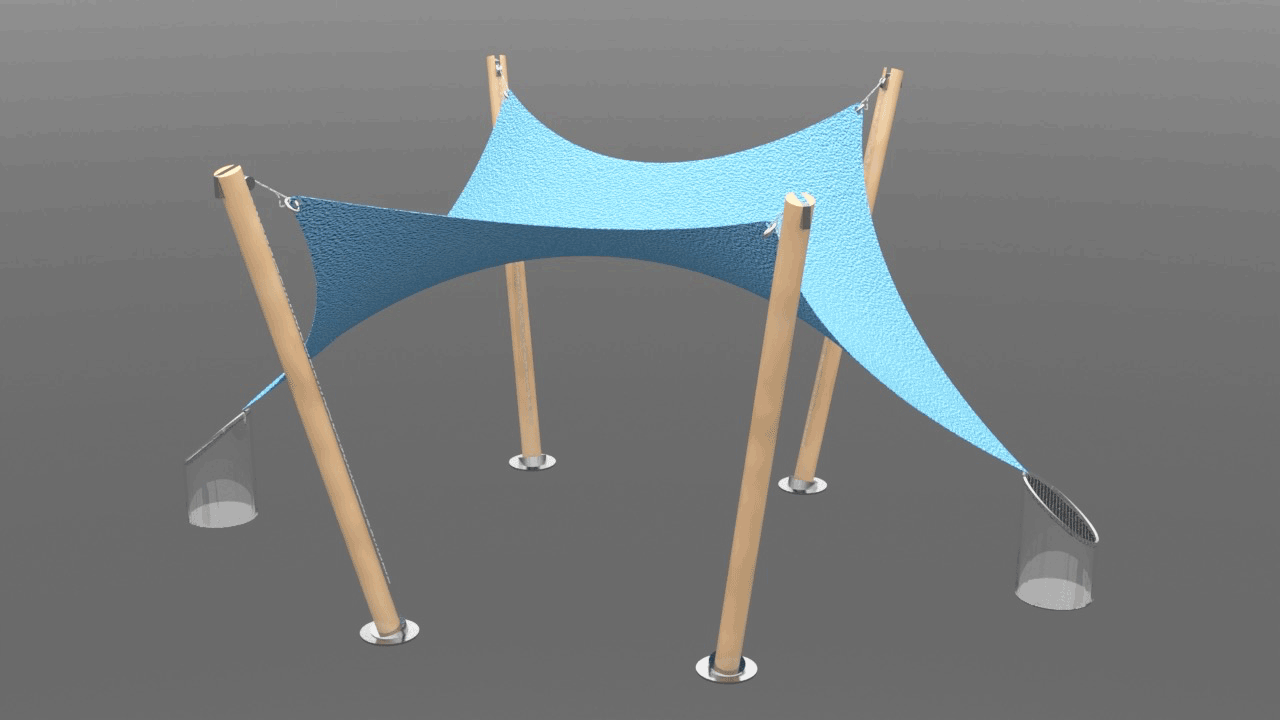top of page
October Rain Festival
Twenty Homes, a continuation of project One Home, was the last stage of this semester long project. It asked students to challenge the modern economic system (circular economy), and slow down the flow of materials and goods around the world, while inspiring intimate and low impact communities. For this stage, we had to work in groups and design a provocation, intervention, installation, or social innovation that would inspire community among about 20 homes. Based on rejuvenation, remaking, and sharing artifacts, Twenty Homes aimed to inspire resilient, low-carbon, and self-sufficient ways of living within a small community group.
Composed of Liam Haigh, Alyssa Calvin, Megan Pereira and myself, our group chose to engage with Dude Chilling Park as our desired location; situated in the Mount Pleasant neighbourhood in Vancouver, BC.
Due to time constraints, our group decided to design a concept proposal for a future project development. We designed a yearly event, named October Rain Festival (ORF), that would celebrate the power and importance of the water. ORF is a time to appreciate the rain and reflect on the benefits it brings to our community, while also creating resilience of the traditional land in which we stand by sharing and growing local plants. ORF hopes to bring people together and create a resilient community through celebration and sharing of knowledges.
Process









We started by mapping our chosen location and researching (through observation and character build up) the people that frequent the area.
We then moved on to brainstorming: we started by creating a question to help frame what we were trying to design. How can we make the park a more enjoyable and accessible space during the winter/rainier months of the year?
An important pivoting point in our process, was when we presented our ideas to the class and a guest critique, Sam Shamsher, questioned us in why we weren’t’ treating the park as its “own entity” and as its “own being” that actually likes the rainier and quieter months of the year: by being a time for the park to rest and rejuvenate. With that new point of view in mind, our group re-framed in which way we wanted to connect the people to the rain.
From much brainstorming, conversation, negotiation and (positive) compromising, our group decided to design something that would collect rain water and something that would receive the collected water, while showcasing the power of water and rain.
Final
From all of that process, ORF, the October Rain Festival, was created; the October Rain Festival would start in the Fall - in the beginning of October - and run all the way until the end of Summer. And then re start in the Fall again.
An important component of the Festival is its temporality. The point of the Festival is to create a mutual relationship between humans and the rain, so we thought that creating a yearly event would be a more effective way to cultivate this relationship. Something that comes and goes creates an excitement for the wait, people want to go and engage in the festival again.
The Festival runs all year around but its most important events occur in the Fall. During that time the festival is comprised of a water collector sculpture + a weekend event.
The collection sculpture is located in the main path of the park, near the Community Garden. We wanted glass water collectors so the community could watch the water level rise in anticipation for the festival. Every year the sculpture will be installed on the first of October. It is what starts off the Festival. People can see the water level rising as they walk through the park daily. That starts to build the relationship between the people and the rain water.
Once the collection sculpture is filled, the weekend event - a planting ritual engaging people with the rain water and the land - will be scheduled for the following weekend. The ritual has 6 steps:
- Get your seed paper
- Write your offering
- Plant it
- Scoop water from the collector
- Walk with the water
- Pour the water onto the planted seed paper
The selected five plants are all berry plants native to the area. They are: Salal, Oregon Grape, Thimbleberry, Black Currant and Stink Currant.
The paper is made from reused and recycled paper, and the ink is made from each of the berries, keeping it biodegradable and safe to plant.
Planting native seeds is important not only for social and cultural resilience of Indigenous People, but it also really helps the soil; it makes it stronger, more fertile, and with more nutrients, helping all the other beings connected to it.
The last component of our festival is a seasonal calendar that illustrates the 4 seasons of the year and what happens in each season in regards to the Festival. It is the only permanent part of the Festival; a 1.5 metres in diameter circular mosaic, placed on the main path of the park. During the time in which the water collector sculpture is up, the seasonal calendar lies right under it.
Overview on October Rain Festival's timeline and activities:
Fall: rain water collector sculpture is put up + plating ritual take place.
Winter: seed germination period. Quieter months of the Festival.
Spring: plants start to blossom. Community is welcome to pick the berries and eat them.
Summer: Growing/harvesting period. Plants become saplings. In the late summer, plants will be dug from the garden and given away to members of the community and other parks around Vancouver.






Project date: November - December 2021
For: Rethreading the Circular Economy project; Industrial Design Core Studio - Emily Carr University of Art + Design
If you wish to know more about the project, you can view a PDF of a detailed process book here.
bottom of page

